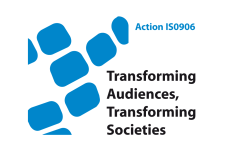- About the Action
- Events
- PhD workshop - Ljubljana 2014
- Action Open Conference - Ljubljana 2014
- New Media and Participation conference - Istanbul 2013
- Belgrade meeting 2013
- Media literacy research and policy - Brussels 2013
- ICA Pre-Conference 2013
- Tampere meeting 2013
- Budapest workshop 2012
- Milan meeting 2012
- Brussels PhD workshop 2012
- Brussels Action workshop 2012
- London meeting 2011
- Zagreb Conference 2011
- Lisbon meeting 2010
- Affiliated events
- WG 1
- WG 2
- WG 3
- WG 4
- Cross-WG
- Output
Young people and SNS: New definitions of privacy?
Trültzsch-wijnen, S. (2011). Young people and SNS: New definitions of privacy? . Nordmedia Conference 2011 Akureyri, Iceland.
http://english.unak.is/conferences/page/nordmedia_2011Abstract: The internet is an important part of young people’s lives. They especially use social network sites (SNS) for the management of identity, the management of relationships and the management of information (boyd 2008; Ito et al. 2008; Luhmann 2008, Neumann-Braun/ Astheimer 2009, Meyen etal. 2009). New media developments like SNS lead to new challenges and demands in the context of media socialisation (Süss 2004); this goes together with cultural changes as well. One of these cultural changes are shifts in the definition of public and privacy (Weiß 2002, Meyrowitz 2002). More and more (former) private information are presented in public, especially in SNS, even if the awareness of risks is growing. In a pilot study 400 SNS-profiles (of German StudiVZ) were analysed, with a two method combination: The elements of each profile where analysed with a partly standardised thematic content analysis (Flick 2003), using different schemes for text and photo. (Including quantitative data for usernames, photos etc.) For the analysis of the photographs a complex qualitative method of categorization was used. Based on the results this presentation will discuss how young people present themselves in SNS, what they do present and what is defined as privacy and therefore not presented publicly. In this context also the meaning of these cultural changes in the definition of public and privacy with regards to media literacy will be questioned. Finally consequences for media literacy education will be elaborated.

